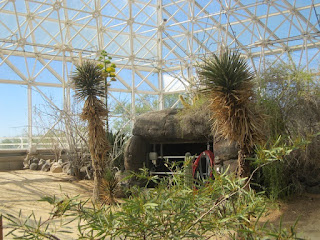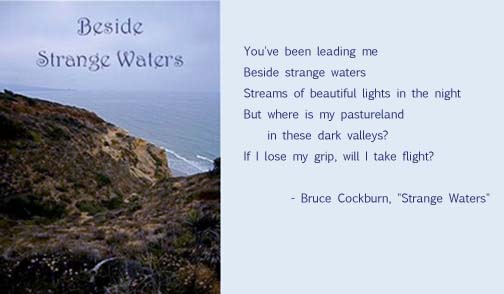How much of the world can you squeeze into 3.14 acres? Biosphere managed to fit an ocean, a fog desert, a rainforest, a mangrove wetland, a savannah, and agricultural areas that included rice ponds with tilapia, vegetable gardens, and grain fields. Not to mention living space for humans and a variety of agricultural animals including pigs, goats, and chickens. An impressive microcosm of large, complex planetary systems.
 |
The Rain Fog Desert at Biophere 2
@2017 Tina Quinn Durham |
|
One detail particularly impressed me: the planners included a fog desert specifically because the plants there are actively producing oxygen in winter, when flora in other biomes are dormant and not producing the oxygen we need to survive. Suddenly, I realized why we need two hemispheres with winter in one and summer in the other, and how important it is that
global weather patterns act like a planetary fan to mix all that oxygen up and move it around.
 |
The Rain Forest at Biosphere 2
@2017 Tina Quinn Durham |
The inhabitants of Biosphere 2 suffered a debilitating shortage of oxygen despite the careful planning that went into creating Biosphere when exposed concrete absorbed both carbon and oxygen. There were other setback too, when the pollinating insects died and the cockroach and ant populations exploded. Even their bodies had to adapt to a low-calorie, high-nutrient diet, and the Biospherans literally felt hungry for an entire year until their metabolisms adjusted.
We cannot predict what effect climate change and altered weather patterns might have on our larger biosphere. We already know that bees are in trouble, and flying insect populations are decreasing. How that will affect the quality of human life and the success of our food production remains to be seen.
However, one fact is painfully clear: humanity cannot survive without biodiversity. To live, to breathe, to have potable water and survivable weather conditions, we need diversity. Everything matters from the smallest microbe to the largest apex predator.
We do not exist in isolation from Biosphere 1.
Bibliography
Wikipedia. “Biosphere 2.” Wikipedia, Wikimedia Foundation, 30 Oct. 2017, en.wikipedia.org/wiki/Biosphere_2.




No comments:
Post a Comment